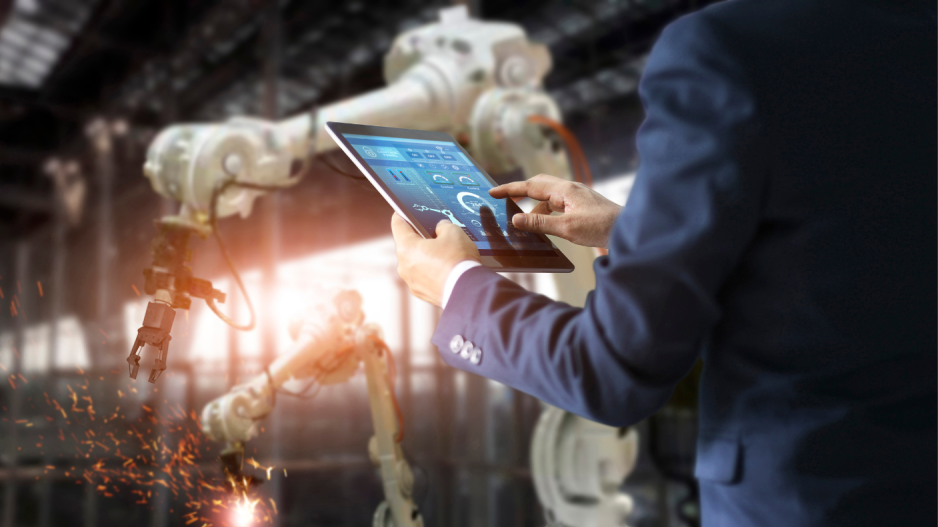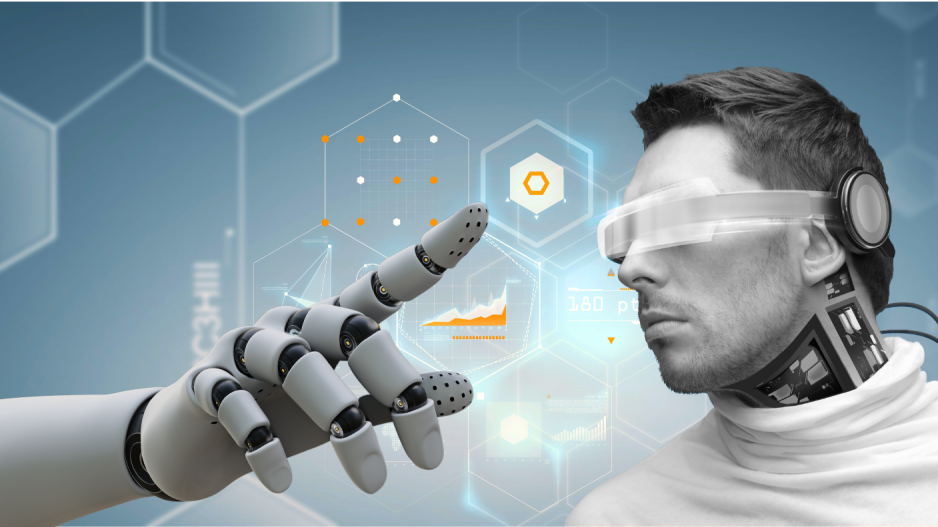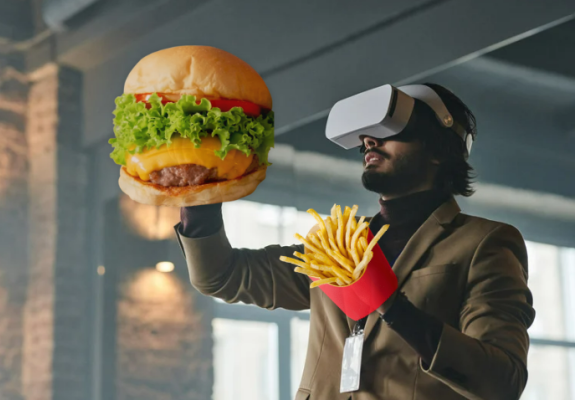Going to the Next Level With Cypriot Haptics Company
Scenes from movies like Haphead and sci-fi books such as Singularity by Charles Stross have grabbed people’s curiosity about the extent to which we can experience and integrate with virtual worlds and the possibility of technological enhancements and remedies to physical ailments. One exciting avenue that has captured the imagination of both researchers and the general public is the realm of haptics and wearable robotics. These cutting-edge technologies offer novel ways to interact with digital content and provide a tangible link between humans and machines.
Although many stories regarding physical integration with technology and haptic suits are often portrayed in a dystopian setting, these technologies create vast possibilities to further explore our universe, bodies, and minds. However, these technologies are arguably still at a nascent stage.
Haptic technology replicates tactile and kinesthetic sensations experienced when interacting with physical objects, especially in remote operations or computer simulations. It is considered to be wearable technology, however not all wearable technology is referred to as ‘haptic’. Wearable technology includes the likes of smartwatches and smartglasses, usually referring to any technology that is used while being worn.
The history of haptic suits can be dated back to 1994, and Aura Systems Inc.’s launch of the ‘Interactor Vest Suit’ which converted sound into vibrations by utilizing an electromagnetic transducer. Another use of early-stage haptic-wear was born from a very amicable idea, to send hugs to loved ones over a great distance.
In 2002, CuteCircuit co-founders Francesca Rosella and Ryan Genz developed the first of its kind wearable haptic garment “designed to answer the human’s need for connectedness and intimacy.” 2004 marked the founding of CuteCircuit as a wearable technology fashion brand in the United States. In 2016, the company took the HugShirt to the next level, and developed the SoundShirt, which enables people with difficulty of hearing to actually feel music.
It goes without saying that due to the technological advancements in this industry, it has generated a sizable market at $3.9 billion in 2022, and is estimated to reach $5 billion by 2028. Additionally, the wearable technology market is much smaller and is valued at $671 million in 2021, and is expected to grow to $12 billion in 2029. Surprisingly to some, Cyprus also has a future in this industry, and its path is paved by the innovative prowess of IreRobot.
Founded by Evagoras Xyda in 2017, Irerobot set its sights on further enhancing people’s understanding and access to reality in not only the physical world, but also the digital. Through state-of-the-art devices and robotics, people’s sensory experiences are augmented to experience the world differently, or in a more enhanced manner.
Recently, Kinisis Ventures Fund I added Irerobot to its portfolio, investing a total of €300,000 in a seed fund round, bringing the company’s funding to nearly €1 million. The investments are geared towards supporting the further development of haptics and robotics technologies from Irerobot.
The Cypriot wearable technology company currently boasts two unique devices, ACETT and BE-PRO. ACETT, which stands for Auditory Communication Enhancement Through Touch, received funding from the Research and Innovation Foundation (RIF) under its “Restart “2016-2020” program. Similar to the SoundShirt from CuteCircuit, ACETT enables deaf and hard of hearing people to be able to hear through the device. This haptic device sends signals through the users’ skin, turning auditory vibrations into something someone can feel.
Irerobot also developed wearable technology, called BE-PRO, meaning Better Exo Project. If the shortened “Exo” stood out to you, you’re right to think that it refers to an industrial exoskeleton. BE-PRO is designed to help workers who perform manual labor to lift and move heavy objects, reducing the risk of injury and fatigue.
A conversation with Evagoras shed light on the value of creating collaborations for innovation, and what the future holds for Irerobot. He expressed that:
"Thanks to Kinisis Ventures, companies like IREROBOT, ASCANIO and Threedium are being funded and are interconnected within the same ecosystem. These companies are taking steps towards commercialization and scaling-up in the market of IoT, Mixed and Augmented Reality, and Haptics. Thus, the facilitation of collaboration between these firms, coupled with their initial commercial success can spark the flourishing of innovative creations that attract international interest and place Cyprus on the forefront of developments, and why not, even ahead of them.
As Henry Ford once said, "If everyone is moving forward together, then success takes care of itself." To catch-up with the lightspeed pace of development and progress in the countries that lead the technological revolution, we need to leave the mindset of the "lone warrior" behind and foster open channels of communication and collaboration between innovative firms, academia, large enterprises, funding bodies and investors.
Only in such an ecosystem will it be ever possible to leverage contemporary scientific knowledge for creating cutting-edge technologies with commercial value; such an endeavour requires scientists, developers, investors, and government officials, interacting and working together from the moment of inception until the product or service reaches the end-user.
In Irerobot, we have created a great team that matches the level of work done by groups operating in large international enterprises. The flexibility that a small independent company offers, can almost certainly lead to the development of innovative solutions that can facilitate important business-to-business deals, hence, generate significant profits that can ultimately be used to achieve our vision, which is to become a leading firm on haptic interfaces and human-machine interaction, internationally."
According to the International Labor Organization (ILO), “The ILO estimates that some 2.3 million women and men around the world succumb to work-related accidents or diseases every year… Worldwide, there are around 340 million occupational accidents.” By empowering the future workforce to perform their tasks more efficiently and leveraging technology to mitigate risk, Irerobot is paving the way for Cyprus to partake in building a better future for all.
Other parts of the world are experiencing a more rapid growth and utilization of haptics and wearable technologies. For example, Elon Musk’s Neuralink and London-based Valkyrie Industries are taking matters several steps further.

Elon Musk’s Neuralink is a mesh between wearable technology and haptics technology. It is essentially a Brain-Computer Interface (BCI) that can help people restore functionality to their limbs or to parts of their body in which they’ve lost, or never had functionality, with just a thought.
It is an implant directly into the brain, and can enable individuals to control a computer or mobile device from anywhere, at any time, using their thoughts alone. By establishing a direct connection between the human nervous system and external digital devices, Neuralink holds the promise of revolutionizing how we experience the digital world.
Late in May this year, Neuralink received approval from the US Food and Drug Administration (FDA) to proceed with human clinical trials. This means that their product is one step closer to market, a first for BCI technology. This, however, does not come without various concerns. At the tail-end of 2022, Neuralink hosted a show-and-tell with members of the Physicians Committee for Responsible Medicine, which highlighted the now public records of animals suffering from subpar conditions in experiments, such as filling holes in monkey’s skulls using unapproved equipment.
Despite this, Neuralink may be able to offer solutions to diseases such as amyotrophic lateral sclerosis (ALS), which affects people’s cognitive and motor abilities.
On a lighter note, In the world of wearable technology development, Valkyrie Industries developed technology for enhanced and targeted exercise by combining virtual reality (VR) and electrical muscle stimulation (EMS). It works by electrically stimulating muscles through armbands, with which muscles are contracted by using electrical impulses, enabling users to feel feedback stimulation on their arms in response to their movements. Users may be lifting virtual weights, or punching virtual punching bags, and feeling the same physical stimulation as they would in the physical world.
As the world increasingly embraces haptics and wearable robotics, Cyprus stands poised to carve out a significant role in this transformative sector. By fostering innovation, investing in research and development, and nurturing a culture of collaboration, Cyprus can position itself as a hub for haptics and wearable robotics.
The potential benefits to society are abundant. These technologies have the power to democratize access to digital experiences, enhance human capabilities, and improve the overall quality of life. By embracing this future, Cyprus can not only benefit from the economic opportunities it presents but also make significant strides in advancing societal well-being.
Haptics and wearable robotics hold tremendous promise for reshaping how we engage with the digital world and augmenting our physical abilities. From Neuralink's mind-boggling exploration of direct brain-computer interfaces to Irerobot's wearable robotics, these technologies are propelling society into a future where the line between human and machine blurs. By embracing this rapidly evolving sector, Cyprus can spearhead innovation in the region, unlocking the full potential of haptics and wearable robots while reaping the benefits of a more connected, inclusive, and empowered society.






